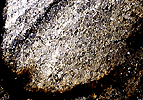3. Groundmass
The orientations of the clay particles present in the soil's groundmass cannot be observed directly in the petrographic microscope, but they can be assessed indirectly by the birefringence that the clayey domains have. As a result of their platy habit, the clay particles tend to be oriented parallel to each other, so that, in an orientated clay domain, the optical phenomena of every individual particle are added to those of the next particle, and the domain acts as if it were a single crystal and has different optical properties, interference colour, extinction phenomena, etc. (which, due to their small size, cannot be seen in the individual clay particles).
The presence of interference colours and their orientation and distribution patterns are a good indication of the fabric of fine material.
The following types can be distinguished:
![]() Undifferentiated. It is characterised by the lack of interference colours in the fine
mass.
Undifferentiated. It is characterised by the lack of interference colours in the fine
mass.
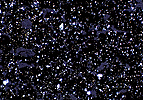
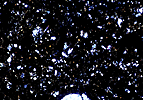
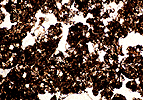
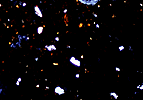
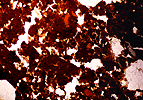
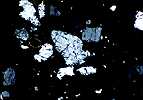
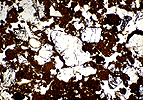
![]() Speckled. Characterised by having randomly
arranged equidimensional oriented clay domains. There are two subtypes:
Speckled. Characterised by having randomly
arranged equidimensional oriented clay domains. There are two subtypes:
Stipple-speckled. The orientations are presented as isolated speckles.
Mosaic-speckled. The orientations are grouped in patches that are in contact with each other.
![]() Striated. It is characterised by having
elongated areas or lines with interference colours. It is subdivided in accordance
with distribution and/or orientation patterns.
Striated. It is characterised by having
elongated areas or lines with interference colours. It is subdivided in accordance
with distribution and/or orientation patterns.
Porostriated. Striations around voids.
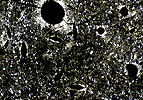
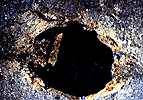
Granostriated. Striations around grains.
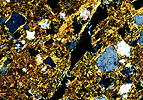
Monostriated. The striations appear as isolated lines.
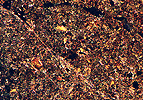
Parallel striated. Parallel or subparallel striations.
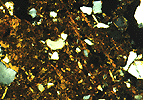
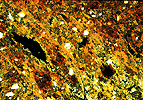
Crescent striated. Worm-like features with an arched internal distribution pattern.
Cross striated. The striations intersect, but they are inclined.
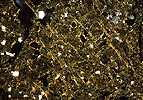
Concentric striated. They are arranged as concentric rings.
Random striated. The striated lines follow an irregular pattern.
Reticulate striated. The striations intersect forming right angles.
Circular striated. The striated lines are arranged as rings.
![]() Crystallitic. The interference colours
that appear are due to the presence of crystallites or small mineral fragments.
Crystallitic. The interference colours
that appear are due to the presence of crystallites or small mineral fragments.
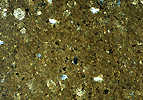
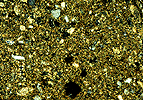
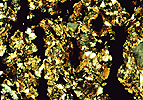
![]() Total striated
Total striated
Where the micromass has a total parallel orientation.
